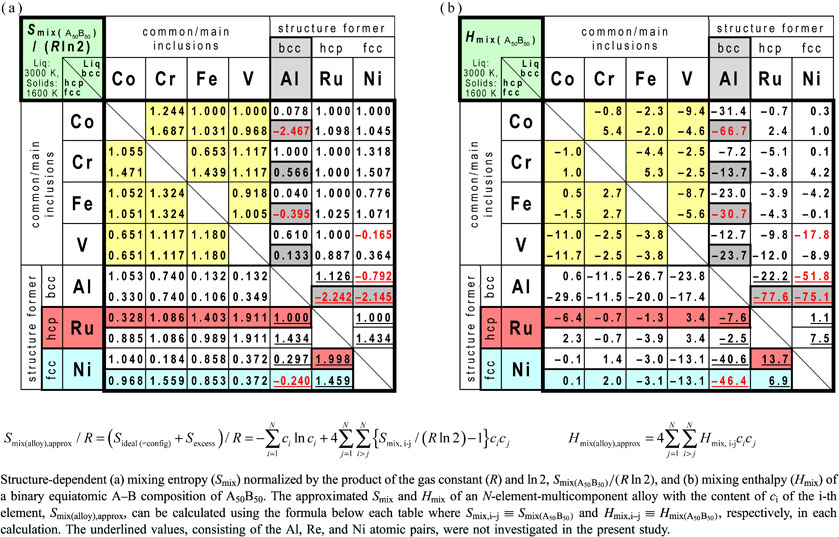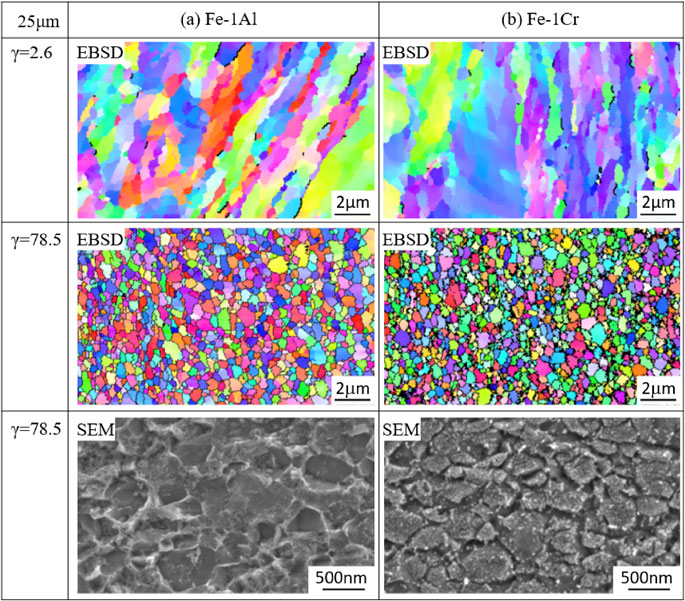63 巻, 6 号
選択された号の論文の30件中1~30を表示しています
- |<
- <
- 1
- >
- >|
Special Issue on Frontier Research on Bonding and Interconnect Materials for Electric Components and Related Microprocessing -Part III-
-
原稿種別: Preface
専門分野: Special Issue on Frontier Research on Bonding and Interconnect Materials for Electric Components and Related Microprocessing -Part III-
2022 年 63 巻 6 号 p. 753
発行日: 2022/06/01
公開日: 2022/05/25
PDF形式でダウンロード (32K) HTML形式で全画面表示 -
原稿種別: Regular Article
専門分野: Special Issue on Frontier Research on Bonding and Interconnect Materials for Electric Components and Related Microprocessing -Part III-
2022 年 63 巻 6 号 p. 754-758
発行日: 2022/06/01
公開日: 2022/05/25
[早期公開] 公開日: 2022/03/04PDF形式でダウンロード (2457K) HTML形式で全画面表示 -
 原稿種別: Regular Article
原稿種別: Regular Article
専門分野: Special Issue on Frontier Research on Bonding and Interconnect Materials for Electric Components and Related Microprocessing -Part III-
2022 年 63 巻 6 号 p. 759-765
発行日: 2022/06/01
公開日: 2022/05/25
[早期公開] 公開日: 2022/03/11 -
原稿種別: Regular Article
専門分野: Special Issue on Frontier Research on Bonding and Interconnect Materials for Electric Components and Related Microprocessing -Part III-
2022 年 63 巻 6 号 p. 766-775
発行日: 2022/06/01
公開日: 2022/05/25
[早期公開] 公開日: 2022/03/18PDF形式でダウンロード (4031K) HTML形式で全画面表示 -
原稿種別: Regular Article
専門分野: Special Issue on Frontier Research on Bonding and Interconnect Materials for Electric Components and Related Microprocessing -Part III-
2022 年 63 巻 6 号 p. 776-782
発行日: 2022/06/01
公開日: 2022/05/25
PDF形式でダウンロード (1971K) HTML形式で全画面表示 -
原稿種別: Regular Article
専門分野: Special Issue on Frontier Research on Bonding and Interconnect Materials for Electric Components and Related Microprocessing -Part III-
2022 年 63 巻 6 号 p. 783-788
発行日: 2022/06/01
公開日: 2022/05/25
PDF形式でダウンロード (5292K) HTML形式で全画面表示 -
原稿種別: Regular Article
専門分野: Special Issue on Frontier Research on Bonding and Interconnect Materials for Electric Components and Related Microprocessing -Part III-
2022 年 63 巻 6 号 p. 789-793
発行日: 2022/06/01
公開日: 2022/05/25
PDF形式でダウンロード (4288K) HTML形式で全画面表示 -
原稿種別: Regular Article
専門分野: Special Issue on Frontier Research on Bonding and Interconnect Materials for Electric Components and Related Microprocessing -Part III-
2022 年 63 巻 6 号 p. 794-799
発行日: 2022/06/01
公開日: 2022/05/25
PDF形式でダウンロード (2570K) HTML形式で全画面表示 -
原稿種別: Regular Article
専門分野: Special Issue on Frontier Research on Bonding and Interconnect Materials for Electric Components and Related Microprocessing -Part III-
2022 年 63 巻 6 号 p. 800-804
発行日: 2022/06/01
公開日: 2022/05/25
[早期公開] 公開日: 2022/03/28PDF形式でダウンロード (3028K) HTML形式で全画面表示 -
原稿種別: Regular Article
専門分野: Special Issue on Frontier Research on Bonding and Interconnect Materials for Electric Components and Related Microprocessing -Part III-
2022 年 63 巻 6 号 p. 805-812
発行日: 2022/06/01
公開日: 2022/05/25
[早期公開] 公開日: 2022/04/08PDF形式でダウンロード (3648K) HTML形式で全画面表示 -
原稿種別: Regular Article
専門分野: Special Issue on Frontier Research on Bonding and Interconnect Materials for Electric Components and Related Microprocessing -Part III-
2022 年 63 巻 6 号 p. 813-820
発行日: 2022/06/01
公開日: 2022/05/25
[早期公開] 公開日: 2022/04/22PDF形式でダウンロード (3658K) HTML形式で全画面表示 -
原稿種別: Regular Article
専門分野: Special Issue on Frontier Research on Bonding and Interconnect Materials for Electric Components and Related Microprocessing -Part III-
2022 年 63 巻 6 号 p. 821-828
発行日: 2022/06/01
公開日: 2022/05/25
[早期公開] 公開日: 2022/04/22PDF形式でダウンロード (4932K) HTML形式で全画面表示
Regular Article
Materials Physics
-
Defect Interactions between Screw Dislocations and Coherent Twin Boundaries in Several fcc Materials原稿種別: Regular Article
2022 年 63 巻 6 号 p. 829-834
発行日: 2022/06/01
公開日: 2022/05/25
[早期公開] 公開日: 2022/04/15PDF形式でダウンロード (2704K) HTML形式で全画面表示 -
 原稿種別: Regular Article
原稿種別: Regular Article
2022 年 63 巻 6 号 p. 835-844
発行日: 2022/06/01
公開日: 2022/05/25
[早期公開] 公開日: 2022/04/22
Microstructure of Materials
-
原稿種別: Regular Article
2022 年 63 巻 6 号 p. 845-853
発行日: 2022/06/01
公開日: 2022/05/25
PDF形式でダウンロード (2612K) HTML形式で全画面表示 -
原稿種別: Regular Article
2022 年 63 巻 6 号 p. 854-863
発行日: 2022/06/01
公開日: 2022/05/25
[早期公開] 公開日: 2022/04/15PDF形式でダウンロード (8655K) HTML形式で全画面表示 -
原稿種別: Regular Article
2022 年 63 巻 6 号 p. 864-871
発行日: 2022/06/01
公開日: 2022/05/25
[早期公開] 公開日: 2022/05/02PDF形式でダウンロード (8401K) HTML形式で全画面表示
Mechanics of Materials
-
原稿種別: Regular Article
2022 年 63 巻 6 号 p. 872-876
発行日: 2022/06/01
公開日: 2022/05/25
[早期公開] 公開日: 2022/05/02PDF形式でダウンロード (2927K) HTML形式で全画面表示 -
原稿種別: Regular Article
2022 年 63 巻 6 号 p. 877-882
発行日: 2022/06/01
公開日: 2022/05/25
PDF形式でダウンロード (2513K) HTML形式で全画面表示 -
原稿種別: Regular Article
2022 年 63 巻 6 号 p. 883-892
発行日: 2022/06/01
公開日: 2022/05/25
[早期公開] 公開日: 2022/04/22PDF形式でダウンロード (5707K) HTML形式で全画面表示
Materials Chemistry
-
原稿種別: Regular Article
2022 年 63 巻 6 号 p. 893-902
発行日: 2022/06/01
公開日: 2022/05/25
PDF形式でダウンロード (5232K) HTML形式で全画面表示 -
原稿種別: Regular Article
2022 年 63 巻 6 号 p. 903-910
発行日: 2022/06/01
公開日: 2022/05/25
[早期公開] 公開日: 2022/04/22PDF形式でダウンロード (5623K) HTML形式で全画面表示 -
原稿種別: Regular Article
2022 年 63 巻 6 号 p. 911-917
発行日: 2022/06/01
公開日: 2022/05/25
[早期公開] 公開日: 2022/04/22PDF形式でダウンロード (5333K) HTML形式で全画面表示
Materials Processing
-
Effects of Phosphate Anodization and Laser Irradiation on Adhesive Property of AZ91D Magnesium Alloy原稿種別: Regular Article
2022 年 63 巻 6 号 p. 918-922
発行日: 2022/06/01
公開日: 2022/05/25
[早期公開] 公開日: 2022/04/15PDF形式でダウンロード (2931K) HTML形式で全画面表示 -
原稿種別: Regular Article
2022 年 63 巻 6 号 p. 923-930
発行日: 2022/06/01
公開日: 2022/05/25
[早期公開] 公開日: 2022/04/08PDF形式でダウンロード (3751K) HTML形式で全画面表示 -
原稿種別: Regular Article
2022 年 63 巻 6 号 p. 931-938
発行日: 2022/06/01
公開日: 2022/05/25
[早期公開] 公開日: 2022/04/22PDF形式でダウンロード (2603K) HTML形式で全画面表示 -
原稿種別: Regular Article
2022 年 63 巻 6 号 p. 939-947
発行日: 2022/06/01
公開日: 2022/05/25
[早期公開] 公開日: 2022/04/15PDF形式でダウンロード (4094K) HTML形式で全画面表示
Engineering Materials and Their Applications
-
原稿種別: Regular Article
2022 年 63 巻 6 号 p. 948-956
発行日: 2022/06/01
公開日: 2022/05/25
[早期公開] 公開日: 2022/04/22PDF形式でダウンロード (8209K) HTML形式で全画面表示 -
Strength of Ultrafine-Grained WC–Co Cemented Carbide with the Combined Addition of Ti(C,N) and Cr3C2原稿種別: Regular Article
2022 年 63 巻 6 号 p. 957-964
発行日: 2022/06/01
公開日: 2022/05/25
[早期公開] 公開日: 2022/04/22PDF形式でダウンロード (6251K) HTML形式で全画面表示
Current Trends in Research
-
原稿種別: Current Trends in Research
2022 年 63 巻 6 号 p. 965-974
発行日: 2022/06/01
公開日: 2022/05/25
[早期公開] 公開日: 2022/04/15PDF形式でダウンロード (7089K) HTML形式で全画面表示
- |<
- <
- 1
- >
- >|

























